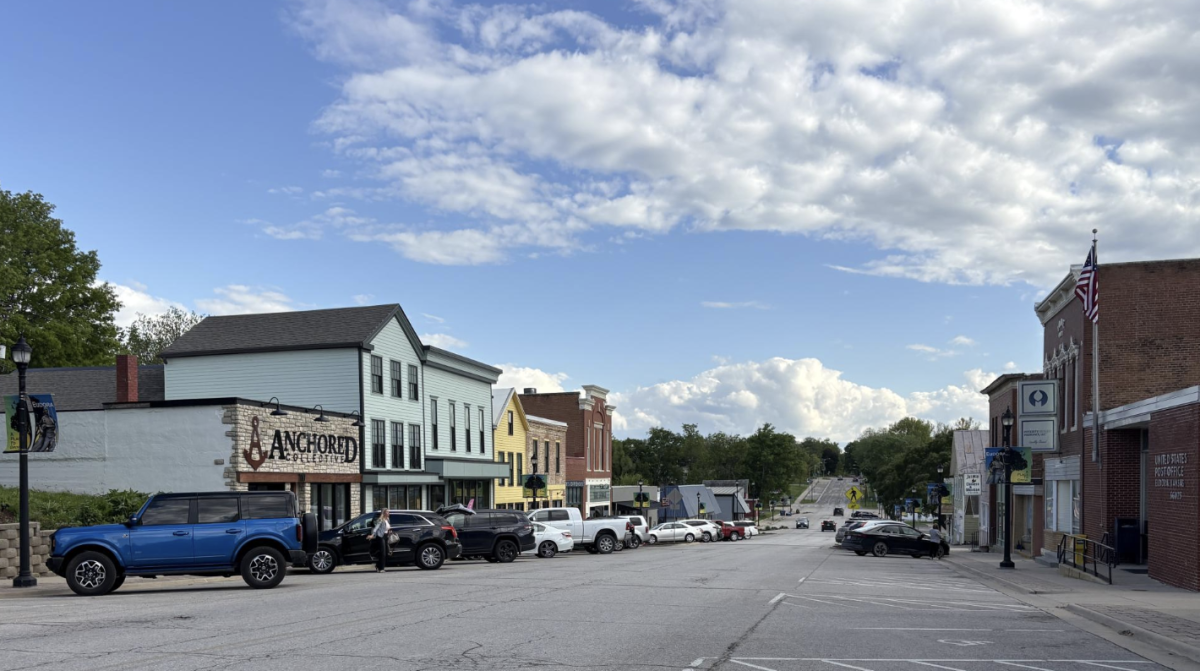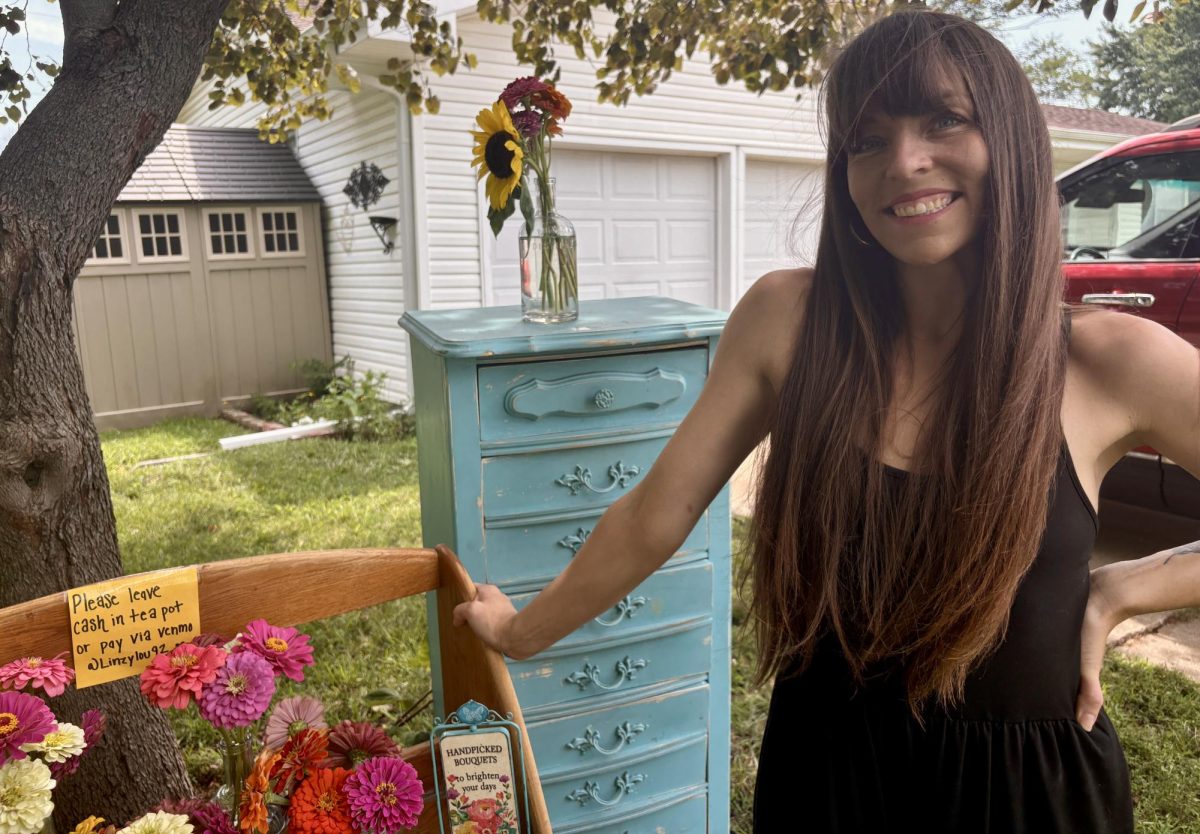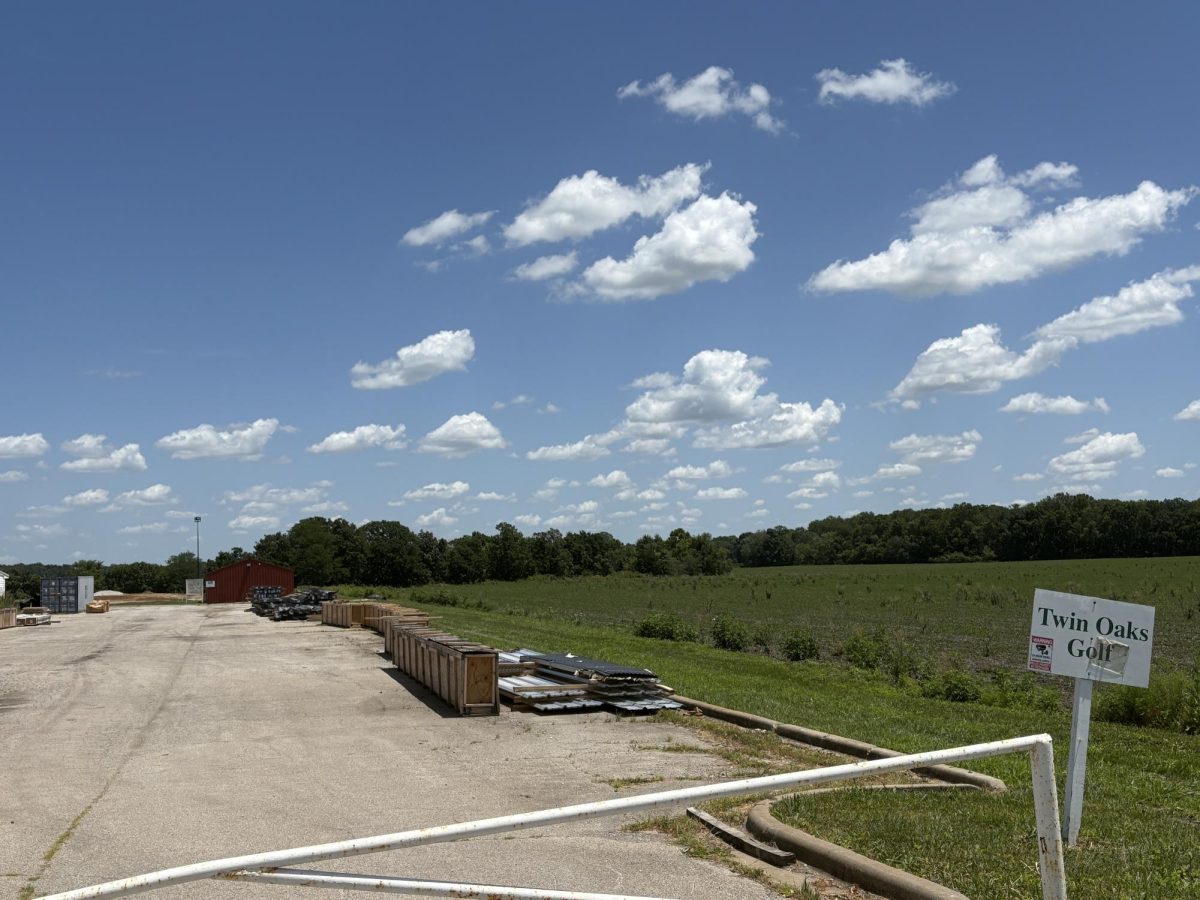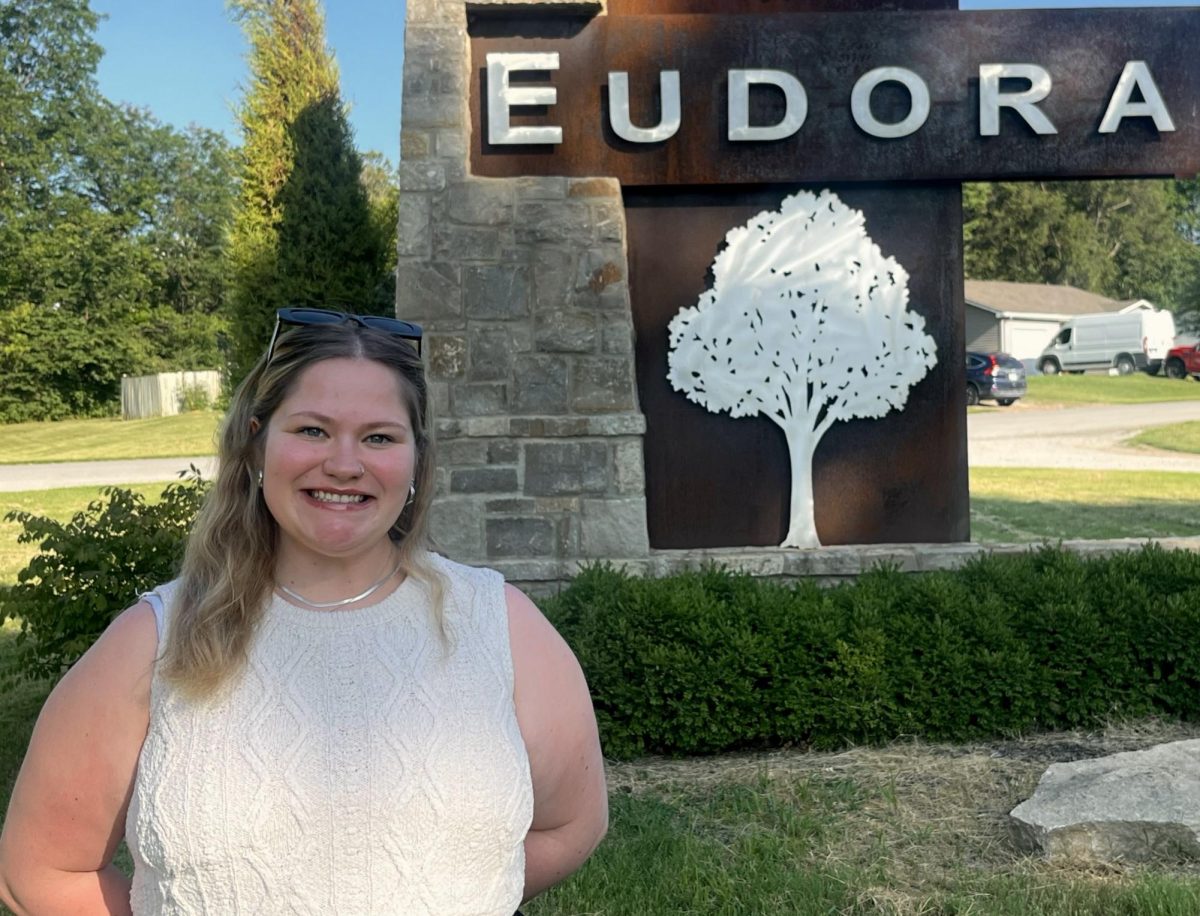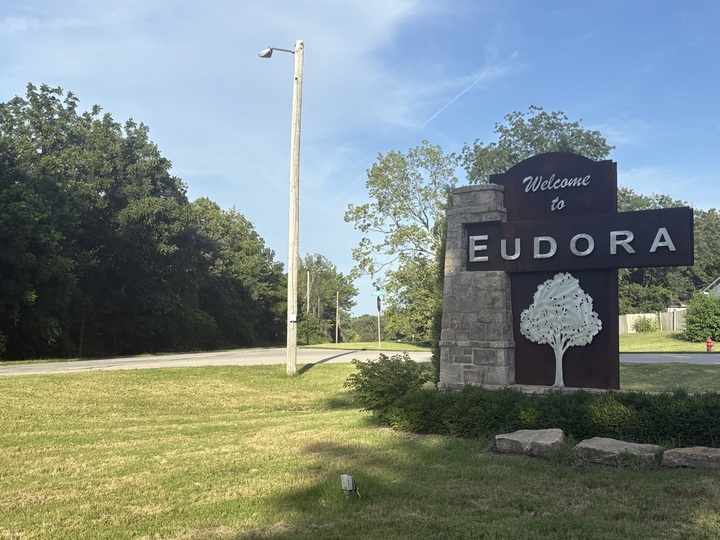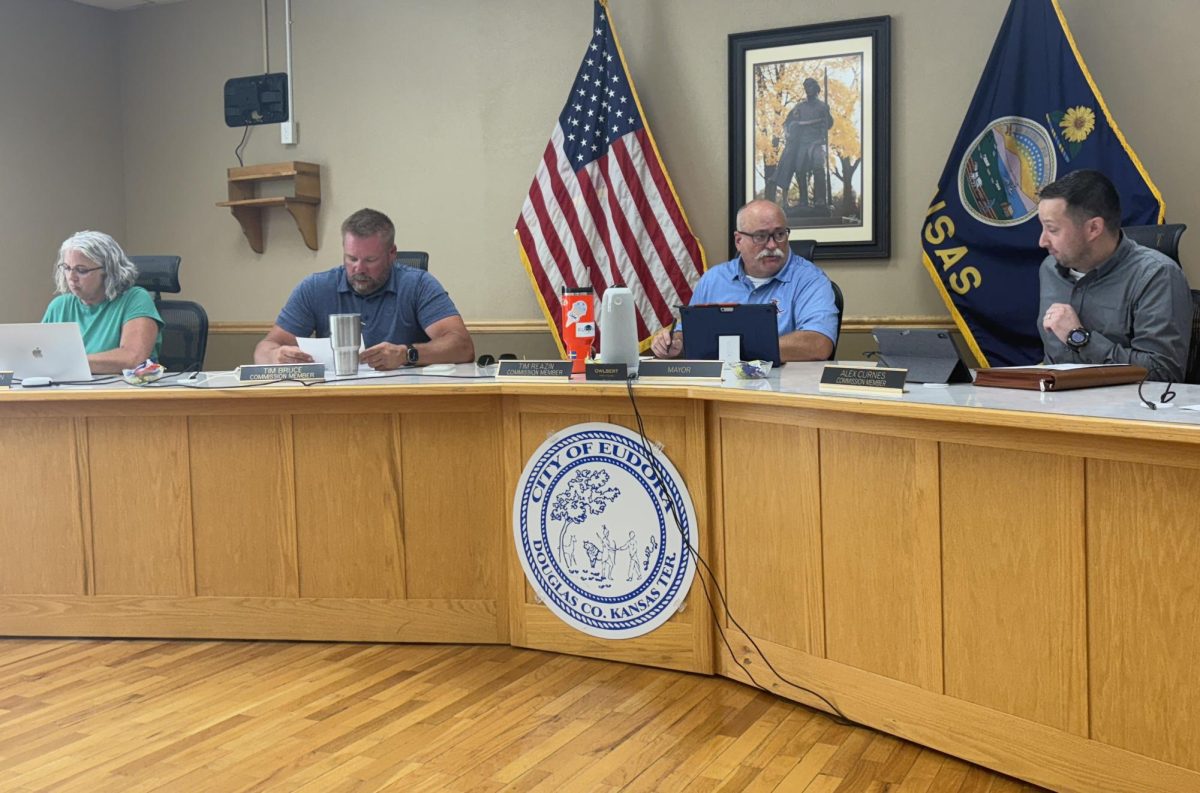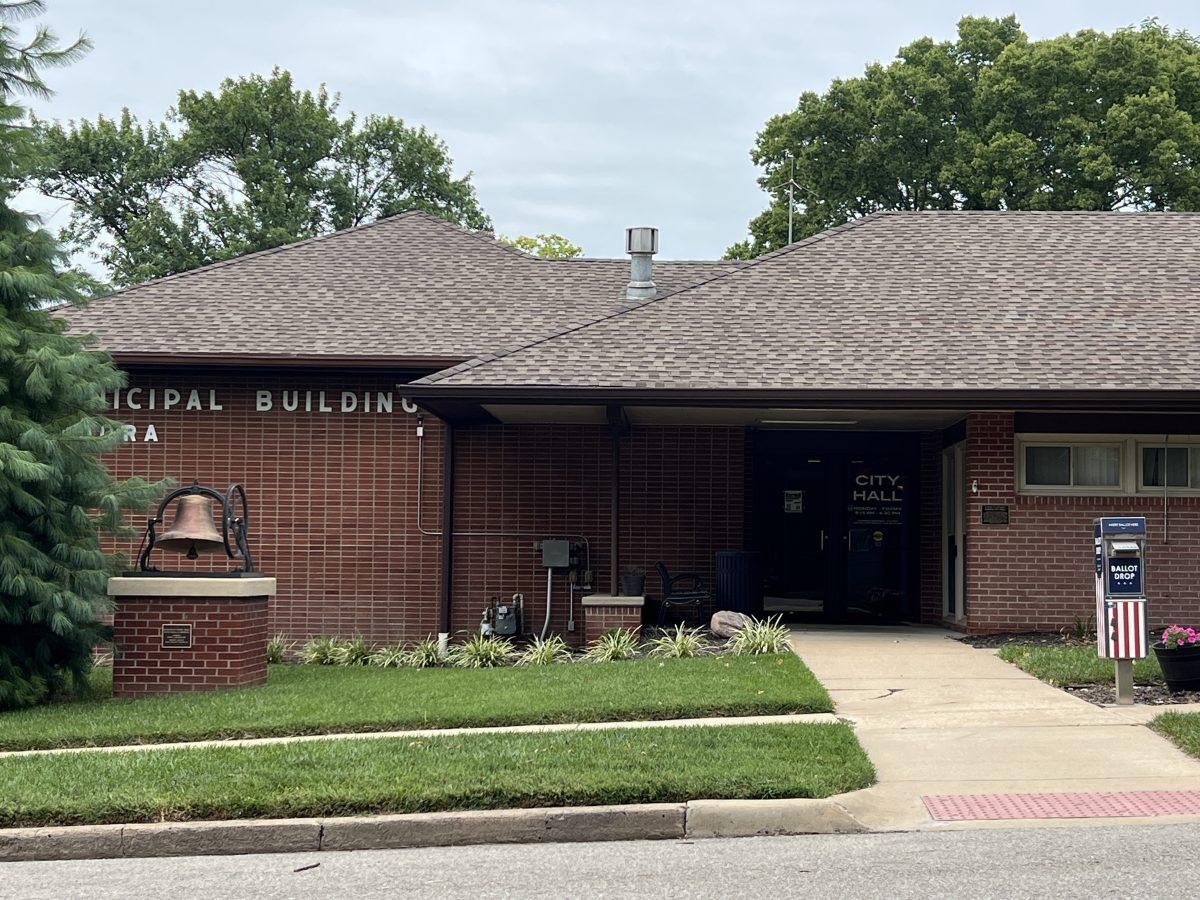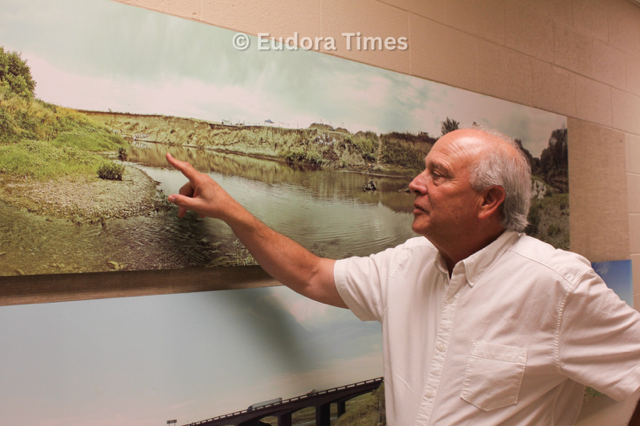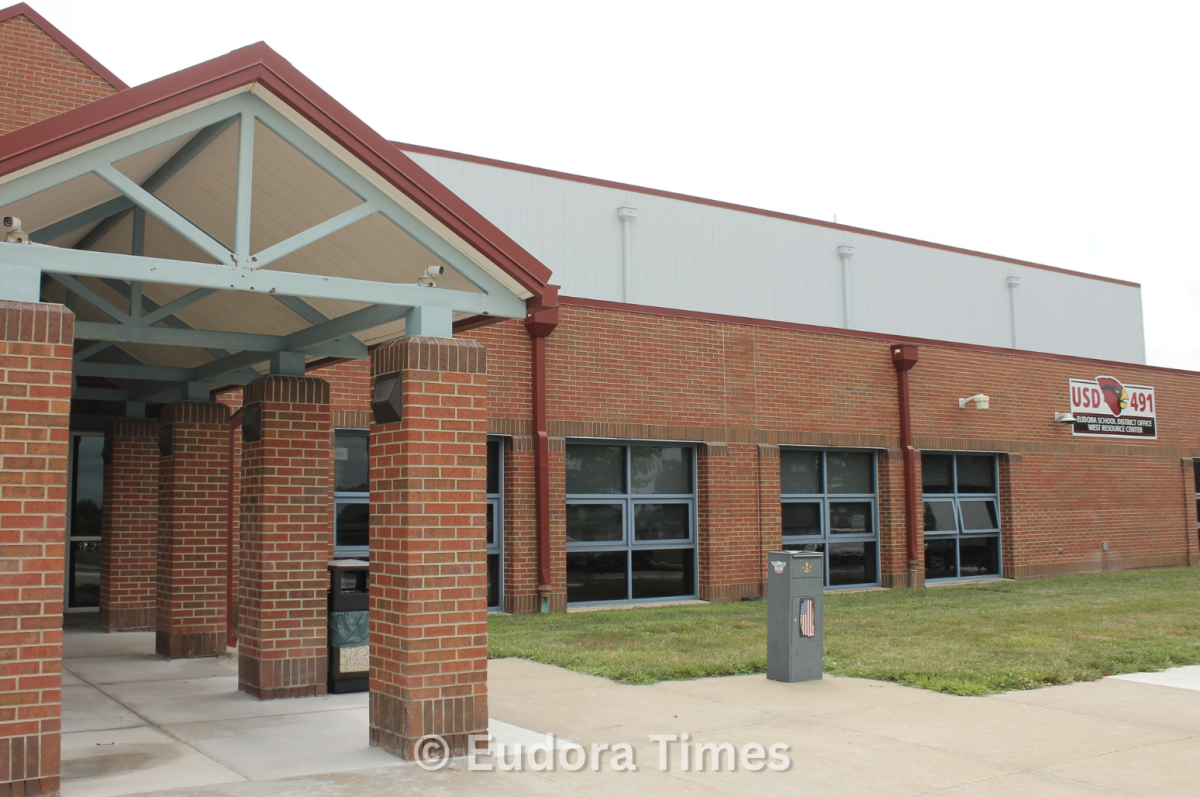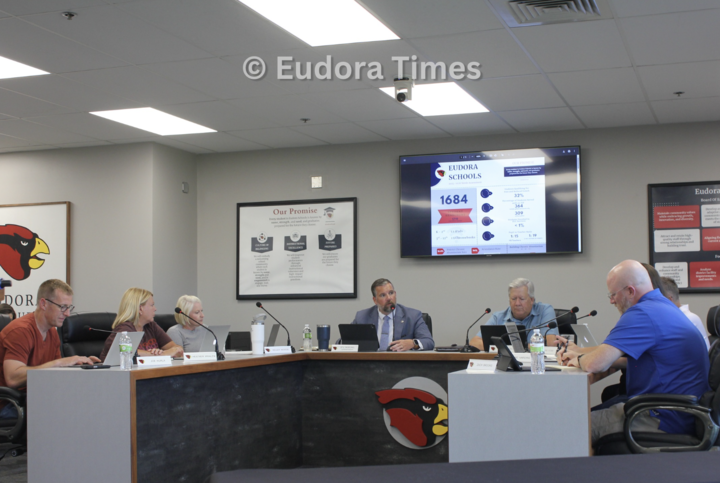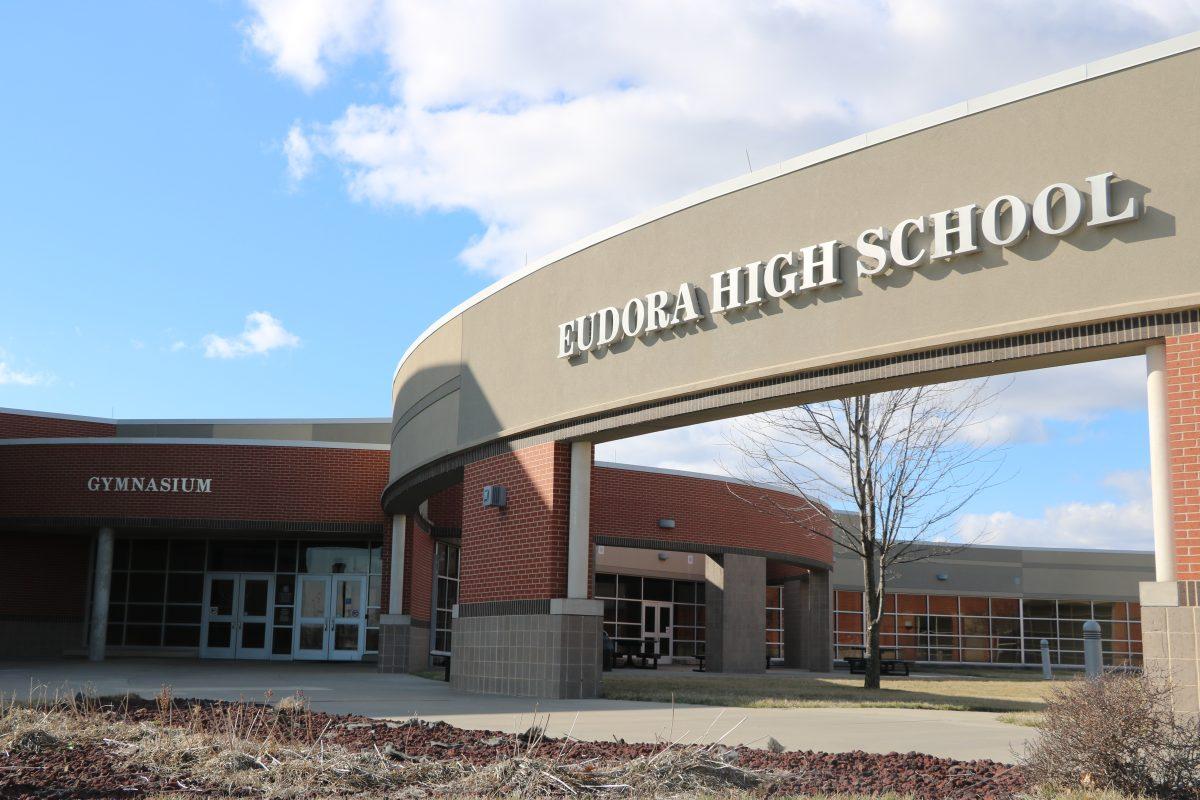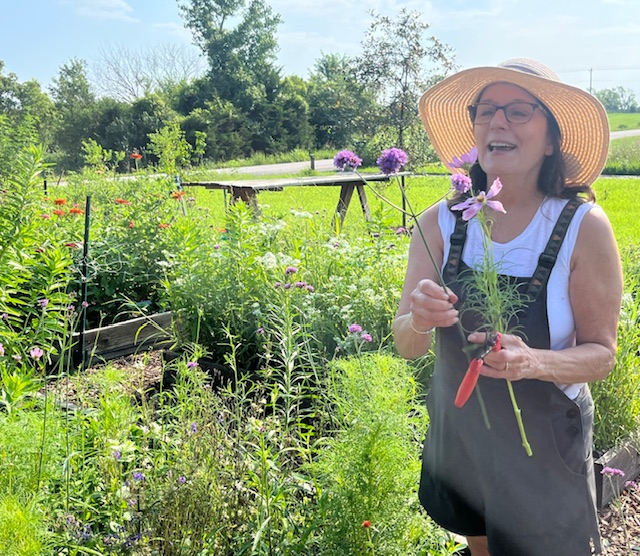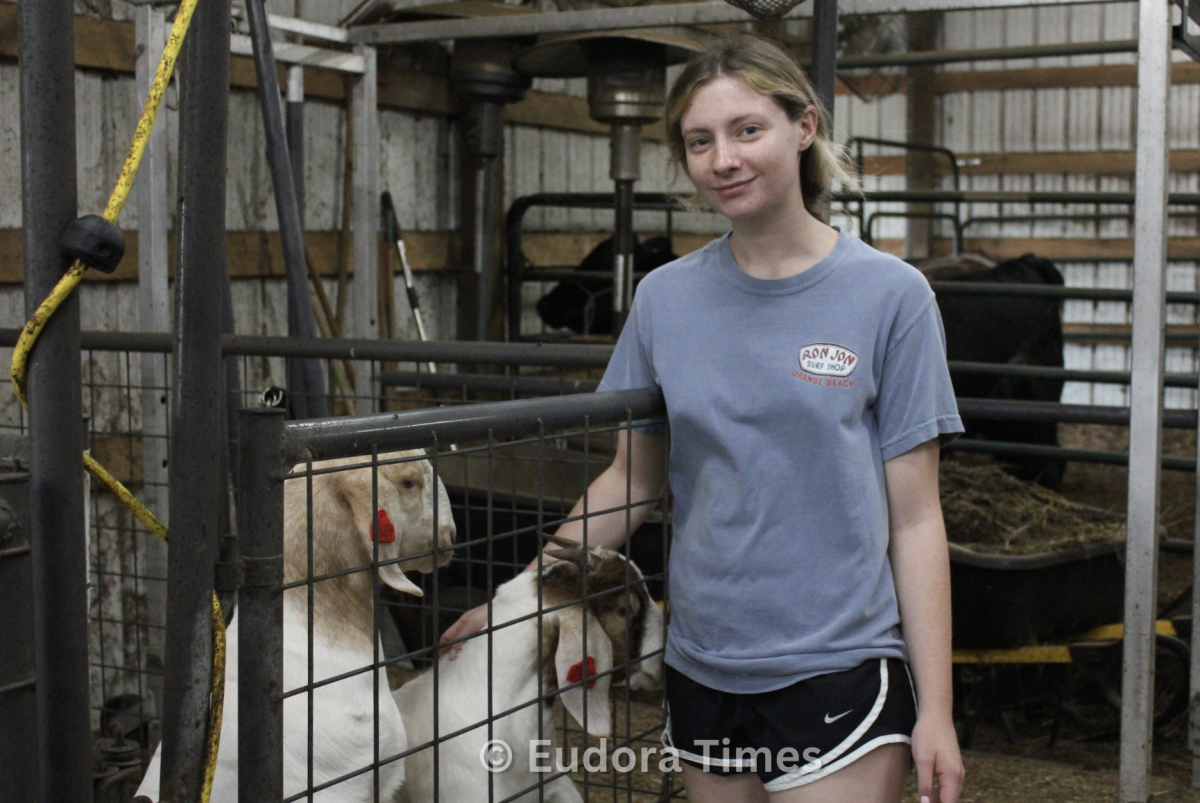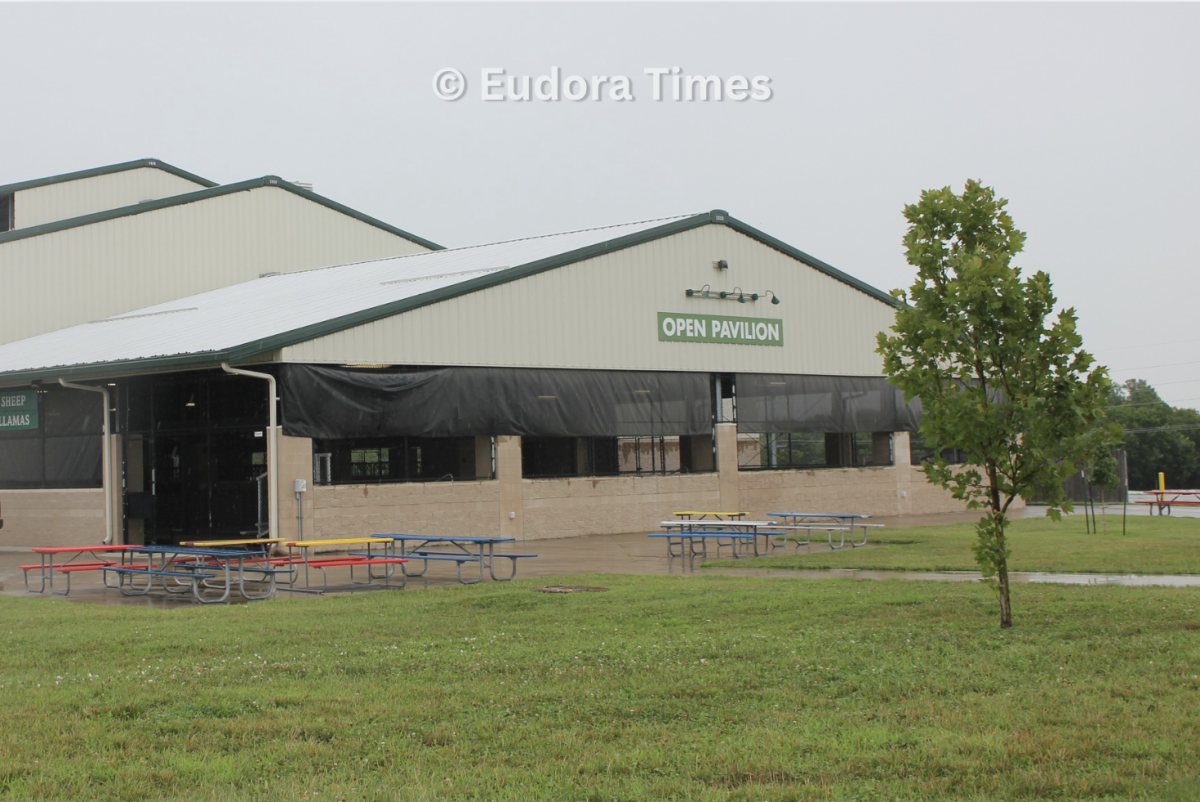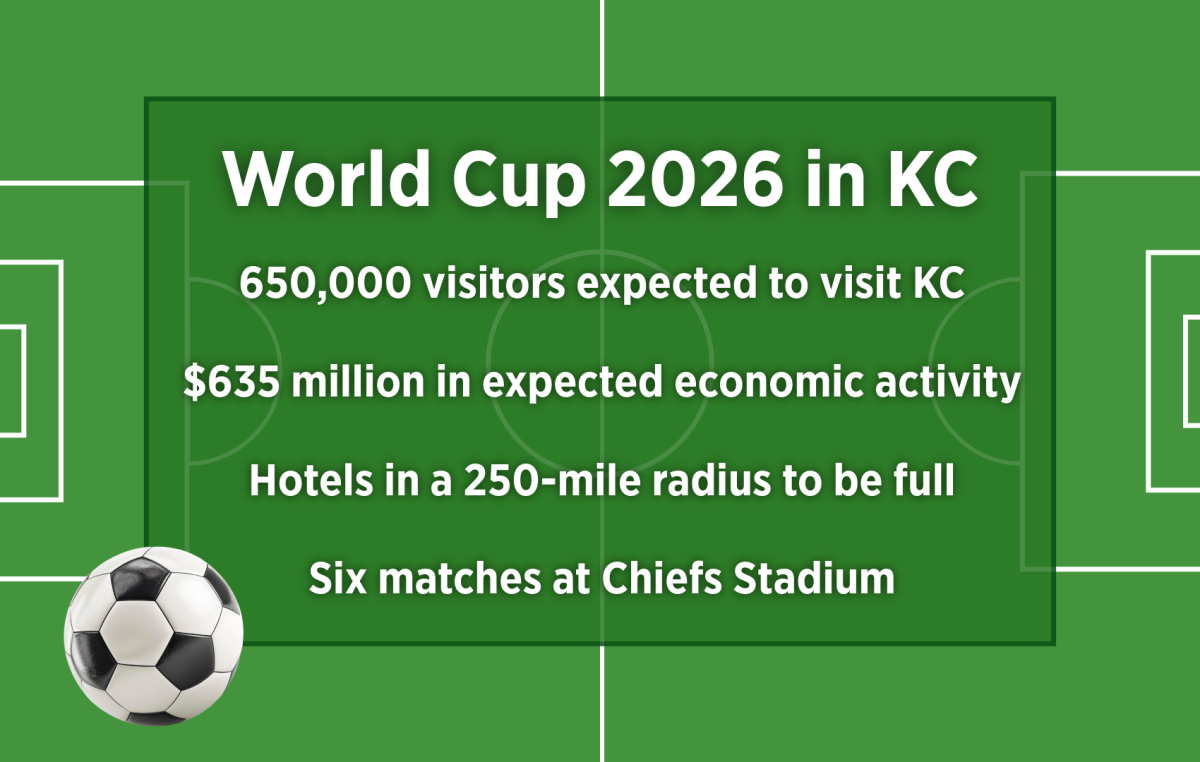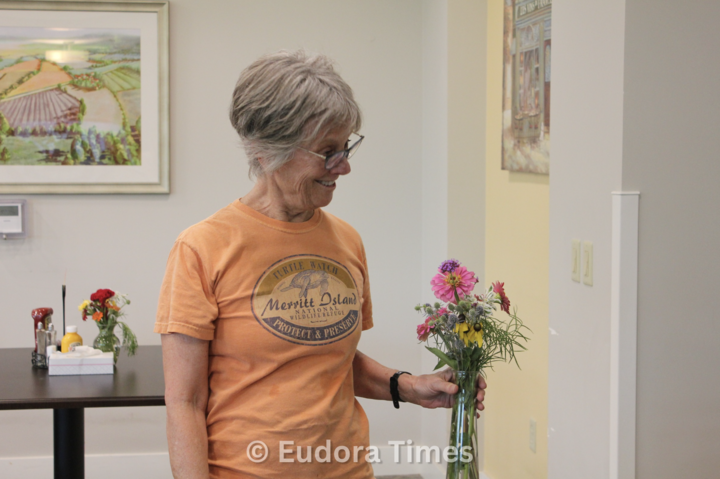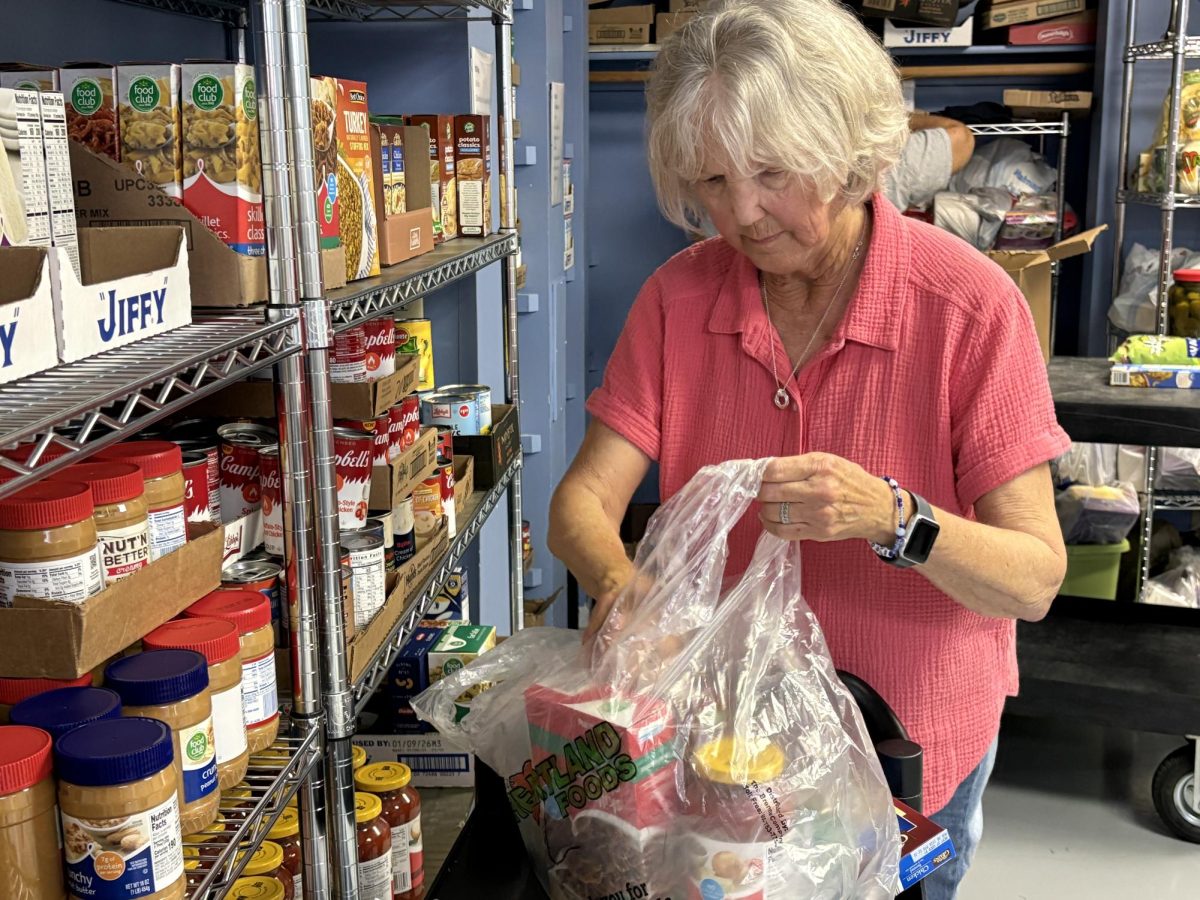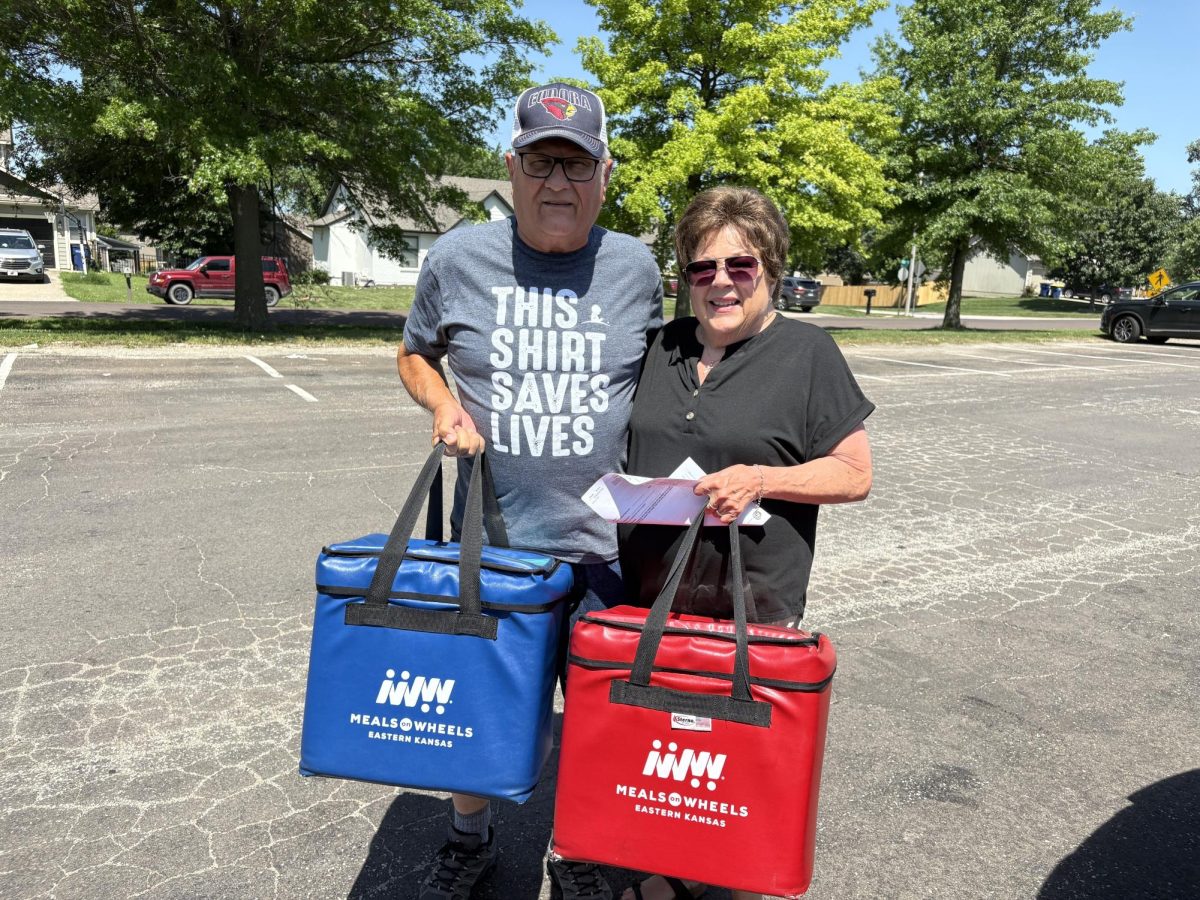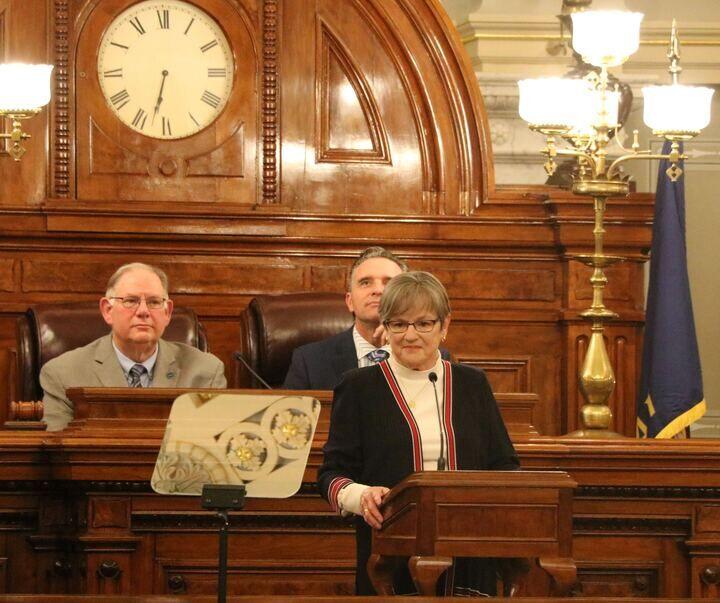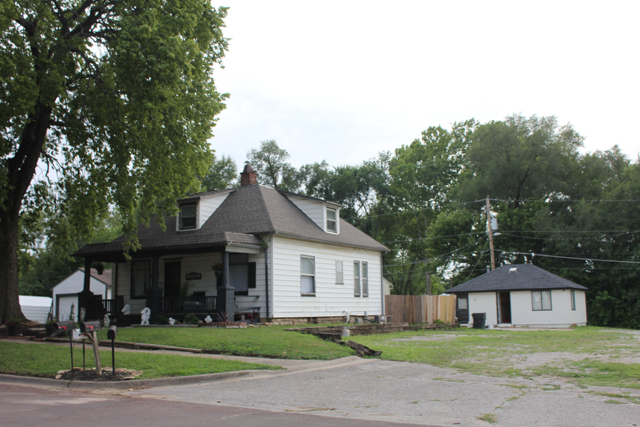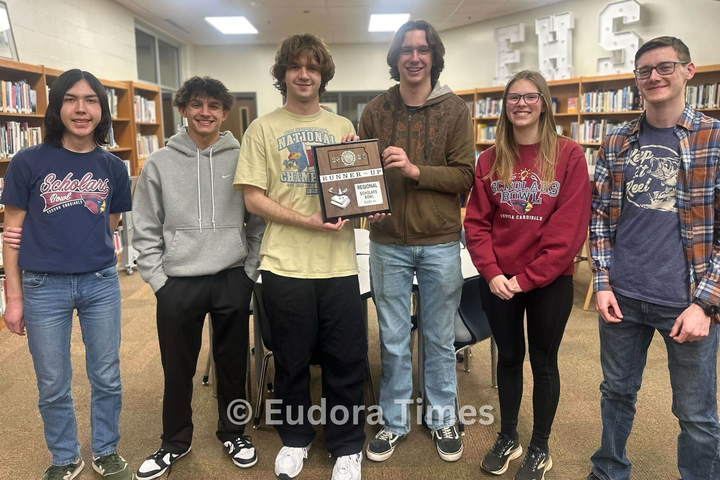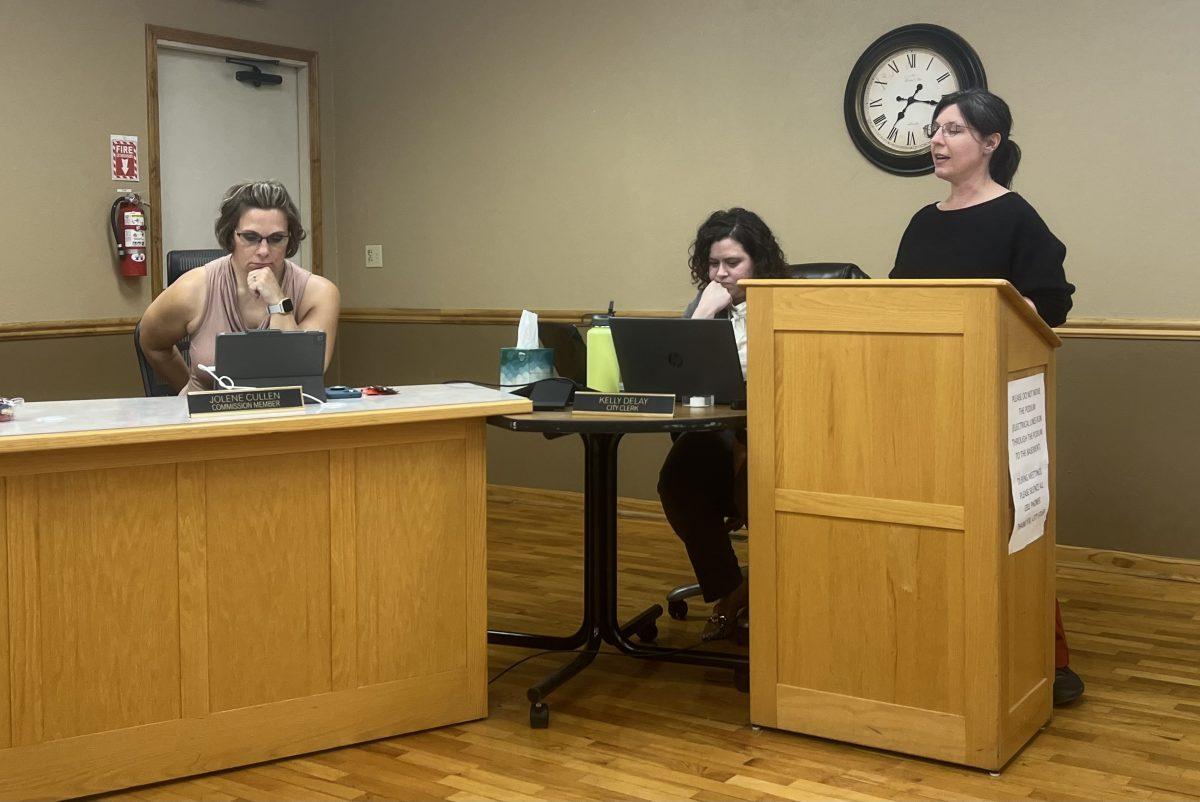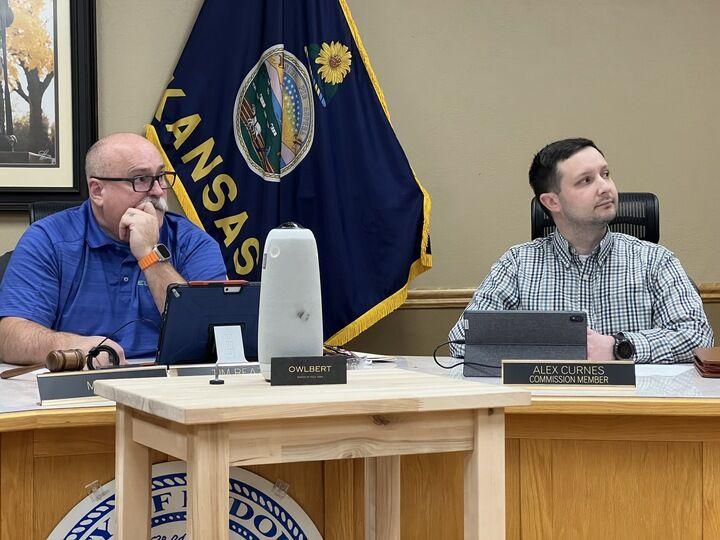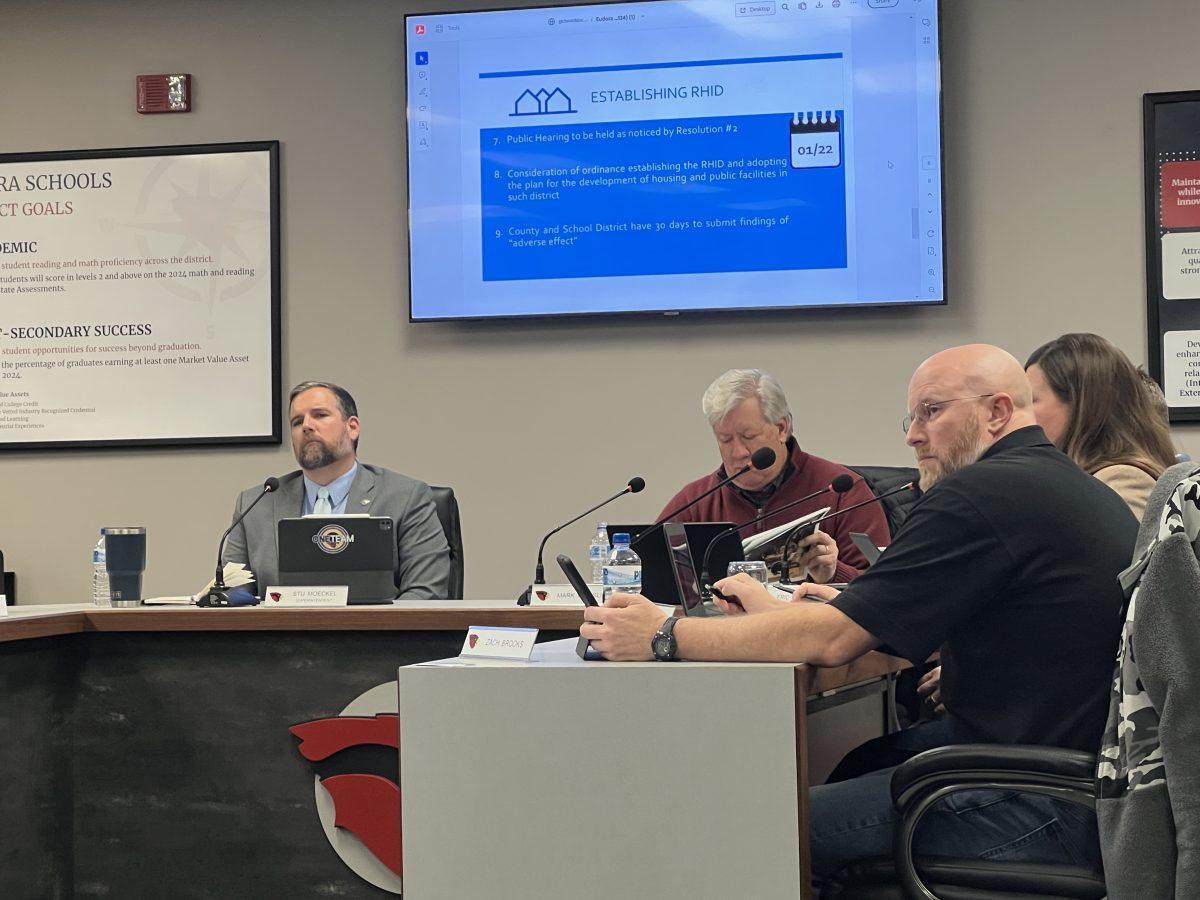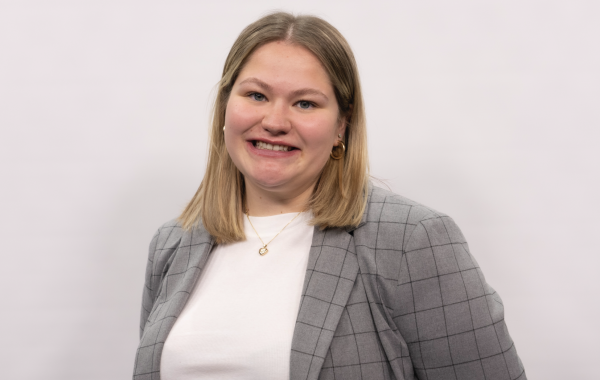The state is doing everything it can to help prepare for the impact that Panasonic is going to have on roads, housing and child care, Gov. Laura Kelly said Tuesday.
The governor’s office requested a 15-minute interview with The Eudora Times to discuss her proposal for Medicaid expansion. During the conversation, the Times also asked about what cities need to do to prepare for Panasonic and how her administration is working on the child care shortage and lack of special education funding.
Q. Tell me how your Medicaid expansion proposal would benefit those living in Eudora.
A. Well, just the same way it would benefit those living anywhere in Kansas. Medicaid expansion would make health care access available to those folks who currently fall in the gap. Those making over – say we’ve got a family of three, say you’ve got somebody making $10,000 a year – they make too little, well, let me put it this way, they make too much to be on regular Medicaid, but they make too little to be eligible for the exchange – the federal exchange where people can sign up and get subsidies, often up to 100% for their health care premiums.
These people between that $10,000 and $25,000, they fall in there, and they’re just not eligible for any kind of affordable accessible health care. Those are the folks in Eudora who fall into that gap are the ones who would be most protected or helped by Medicaid expansion.
Beyond that, it also would be good for the economy. We expect that, statewide, this would create about 23,000 new jobs. It would significantly help our health care facilities or hospitals and our clinics, because right now, so many of them are providing unreimbursed care, charity care, where they’re having to just eat it.
I mean, they have to take care of people who come into the emergency room – whether they’re insured or not. So this would allow them to get reimbursed for those emergency services, so very significant.
It would help us with our health care worker shortage. What we have right now because we are sort of a desert here in the middle of America, all four states around us have expanded Medicaid. So we have health care workers leaving Kansas and going across the border because they can get reimbursed for their services, or they can get paid more by the facility that employs them. So all sorts of good reasons and not one reason not to expand Medicaid.
To date, 40 states have adopted Medicaid expansion. Kansas is one of 10 states that has not. Senate President Ty Masterson has previously said, “It is poor public policy to push able-bodied adults off of private insurance and onto a government program that was intended for the truly vulnerable.” What is your response to that?
It is a myth that has been debunked over and over again. We know that of the 150,000 or so Kansans who would be eligible for Medicaid expansion, that well over 70, close to 75% of them are working right now, but they’re working for employers who don’t provide employer-based health insurance.
So these are people who are working in your restaurants, they’re taking care of your children at the day care center, they’re working at the nursing home. And, you know, they again, they make too much to get on regular Medicaid and not enough to get on the exchange, so it’s just absolutely false.
Of the 25% or so that are not working, many of them are at home taking care of either really young children, an elderly parent or a disabled family member. You know, they’ve got legitimate reasons for not being in the workforce, so in my sixth proposal this year, I did put in a work requirement but it exempts folks I just mentioned and then would also include veterans.
To shift gears, with Panasonic on the horizon, much of the attention so far has been given to De Soto, but Eudora will also be impacted. What do you think the state should do to help cities like Eudora prepare since our community is also just miles from the plant?
Yeah, well, we are doing a whole lot to work with our communities to get them ready for this, you know, we’re doing a lot on infrastructure. In particular, roads, highways are all part of this plan. And I’m sure that KDOT has been working with local officials if there are some highway projects that need to be taken care of.
Housing – we know that this influx of thousands of new families is going to put a strain on an already strained housing situation, so we’ve been investing heavily in working with the communities to help them ramp up their housing supply.
Child care – we know that a lot of these people coming in are going to have young children and are going to need child care in order to be able to work. And so we’ve been investing heavily in child care, trying to increase the number of slots that we’ve got available, and working with our communities. We’re trying to do all of this stuff in partnership with our local units of government and with the private sector, so that this is a comprehensive, all-hands-on-deck approach.
Eudora city commissioners have expressed concerns about traffic on K-10 and that a state transportation study stops at the Johnson County line and doesn’t include Eudora. What discussions are happening to ensure K-10 can safely handle that much more traffic a year from now?
I know that K-10 has received a lot of attention through the Kansas Department of Transportation. I can’t give you specifics on exactly what the plans are, other than they fully recognize that it needs to be enhanced and that there needs to be a lot more on and off ramps. And they need to be able to deal with the capacity.
I think there’s also some conversations going on to cut down a bit on the cars that are actually on K-10. I think Panasonic is working with some of our cities to look at possibilities of public transportation to and from areas a little bit further away than De Soto.
Even without 4,000 more workers about to start at Panasonic, rural communities are struggling with affordable housing for workers, families and senior citizens. How is the state working to address this?
We’ve been working on housing really the entire time that I’ve been in the governor’s office, because we just recognize that we have a housing shortage, even back then, and we need to do something about it. Then was all the economic development success that we’ve had, you know, it really magnified the issue because we have brought in 66,000 new jobs to Kansas. All those people and their families need someplace to live, so over the past five years or so, we’ve done a number of things.
One, part of the problem, particularly in our rural areas, with getting housing built, is that there’s not enough money in it for the developers to make it worth their while. We’ve been developing a number of tax credits and structures that do provide that incentive for developers to build in our rural areas.
We’re just trying to partner with them because we know Kansans need this housing. So we’re trying to figure out a way to make it a win-win for the communities, but also the developers. So we’ve been spending a lot of time and investing a lot of funding in programs that do provide those kinds of incentives for developers.
You know, we have modified a fair number of our other kinds of tax incentives, our rural housing incentives. One, we’ve now taken this statewide so that everybody is eligible for it. We’ve also increased the – not increased the funding because this is tax incentive or tax credit – but what we’ve done is we’ve modified it.
It used to be that you had to sort of build on the outskirts of town, you know, a housing development. You can still do that, but we’ve also modified it so that if you want to go to downtown Eudora and there’s space on the second floor of some of your buildings that have been mothballed for years, you can now use this tax credit to build living space up there, apartments, condos.
And we’ve seen that take off like wildfire across the state. A lot of our smaller communities are using that, and it’s doing two things – It’s providing additional housing, but it’s also sort of reinvigorating downtown’s. So it’s just sort of a win-win all over the place.
Editor’s Note: Kelly was referencing Reinvestment Housing Incentive Districts, something the city is currently exploring for Eudora developments.
There is already a child care shortage in Eudora and across the state. What is being done at the state level to address the child care crisis?
We’re pouring a record amount of money into the child care area. I think last year we put – I want to say $96 million into child care, sort of a record amount in the state. What that’s doing is increasing – I think last year we increased the number of child care slots by about 6,400 slots – but we’re also now, again, working with our local communities, and the private sector, whether for profit and nonprofit, to develop partnerships, and we’re actually investing now in bricks and mortar.
Before, we didn’t do that, it was strictly on subsidizing child care slots, but not helping communities build child care facilities. That’s changed significantly. I was just in Lawrence the other day and they’re doing a big addition to a child care facility there, and I’ve been in other communities across the state where we’re actually building spots.
We’re also working really closely with our businesses, you know, we have recruited a lot of businesses into the state, and we do that through all sorts of incentive programs. But one of the things that we had not been doing before I became governor, was we were not including the possibility of child care being an additional incentive.
Working with those businesses to make it affordable for them to provide on-site child care facilities, or for them to work with the local community to ensure that there are child care slots in that community for their employees. So that’s been a well received program, both by the companies and by the communities.
Also about a month, two months ago, I signed an executive order to essentially consolidate the myriad of early childhood child care programs that we have throughout the state government to bring it all under one umbrella – creating the Office of Early Childhood – where we will be able to make much more efficient use of all of the funds that we do have going towards child care, all of the programs that are there, making it easier for families, easier for child care providers and much more cost effective so that we can make our child care dollars go further.
The Legislature has not adequately funded special education funding for over a decade, which then impacts an entire school district’s budget. What do you expect to see happen this session?
I’m hoping not more of the same, you know, this is the second year in a row that I had presented a phase-in process to get to fully funded special education. Last year, the Legislature did not pass that. This year, there’s still some talk. It’s not dead yet, and I’m hoping that we can keep it on the burner so that we start ourselves on the path to fully funding special education through a four- or five-year period of time.
Like you said, it’s essential that we do this because every nickel that we don’t fund special ed, the school districts just have to take it out of their general education funds. Special ed is mandated; they have to provide it. It really just hurts the overall school district and all the students in the district.
Reach reporter Sara Maloney at [email protected]
To donate to support our community journalism, please go to this link: tinyurl.com/y4u7stxj

